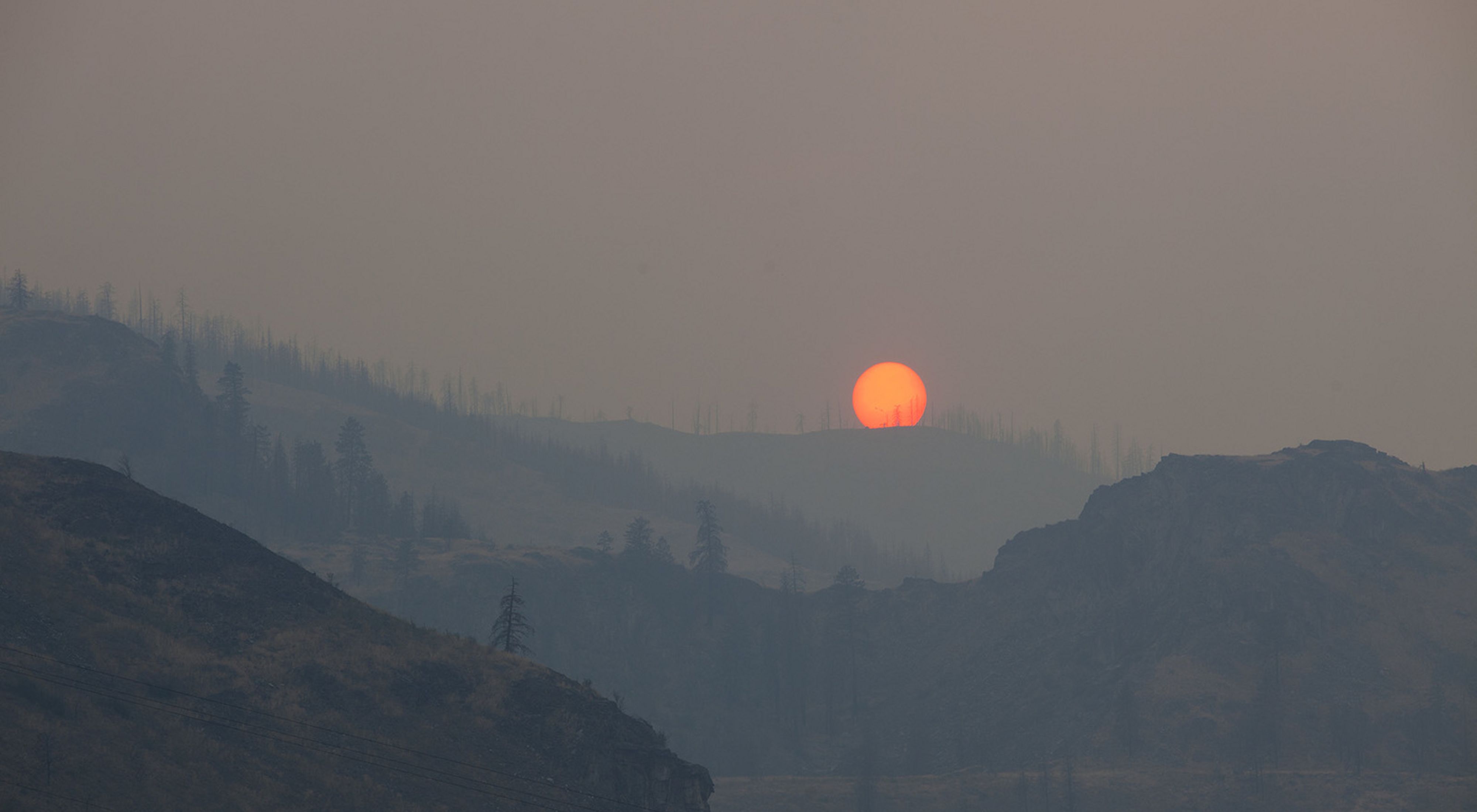Faced with Fire and Smoke: What to do?
By Reese Lolley, Director of Forest Restoration and Fire
During recent summers, smoke-filled skies across Washington were a visible indicator of fires burning across the West. Sensitive communities felt the effects of the some of the worst levels of air pollution several Washington cities have ever experienced.
Summer after summer, Washington residents are living with thick smoke, intense wildfires and evacuations in and around our communities — when a fire strikes, our thoughts are with local communities and firefighters foremost.
But it doesn’t have to be this way. Together, we can support the “active management” it will take to restore our dry forests, and help communities prepare for fire.

Treating the forest with its long-term health in mind includes a few tools, one of which is mechanical thinning. This means cutting down some trees — often smaller ones — which reduces the amount of fuel a potentially catastrophic fire could use to burn through the landscape and communities. Because humans have excluded fire from the landscape for the past century or more, many smaller trees have grown in spaces where they wouldn’t historically have grown, creating conditions where surface fires climb into tops of trees becoming destructive as well as much harder to control.
A second treatment tool for forest health is prescribed burning. After removing smaller trees, a prescribed or controlled burn may be used to help set the forest back into a rhythm where smaller, low-intensity, lower-smoke fires burn through periodically. These lower-intensity fires create healthy forests as well as create conditions where fire crews can more safely and effectively manage wildfire reducing risks to communities. (Prescribed burns still produce smoke, of course, but nothing like the smoke that we have experienced from the unplanned wildfires burning in Washington and neighboring states and Canadian provinces.)

These forest-health practices support jobs and rural economic vitality by employing loggers, foresters and prescribed-fire professionals to work on the ground restoring the landscape toward a more wildfire-resilient state and is one aspect of creating safer and more resilient communities living in fire environments.

Towns across Washington and the West are beginning to tackle the reality of living in fire-adapted landscapes. Efforts such as the Washington State Fire Adapted Communities Learning Network enable communities to take steps together to prepare.
OUR FORESTS ARE SICK — WHAT'S THE TREATMENT?
There is no future in Washington without smoke and fire; the only real choice is how we want our smoke and fire. Supporting prescribed fire in the fall and spring is important. To this end, we are working collaboratively with other agencies to work at scale. In partnership, we are planning more Prescribed Fire Training Exchanges in Washington, where fire professionals from federal, state, tribal and private agencies come together to learn and train in prescribed fire through a formal prescribed fire training exchange.
It’s time to start working with fire, not just fighting against it.
Smoke and Your Health
This map shows active fires and current air-quality conditions across Washington. For what each level of air quality means and what you should do as precautionary measures, consult this graphic from the state Department of Health.
Exposure to wildfire smoke can cause health problems. Some symptoms include:
burning eyes
sore throat
headache
coughing
wheezing
shortness of breath
worsening of heart and lung conditions
The possibility for high levels of smoke to worsen symptoms or trigger health effects for the people with heart disease or lung disease is especially a concern because this can be life-threatening. Sensitive groups include:
people with heart and lung disease
people with respiratory infections
people with diabetes
infants and children
pregnant women
people over 65
Inhaling wildfire smoke is not good for anyone, even healthy people. Explore more resources from the state Department of Health for everyone as well as specific information for people who are especially sensitive to smoke.
